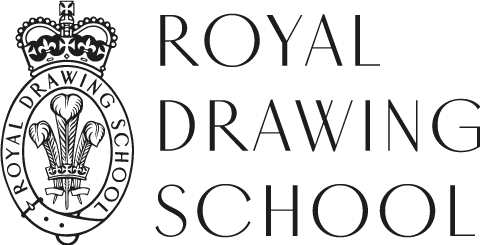Drawing Year Student Wins Award at the Jerwood Drawing Prize: Interview
Kristian graduated from the University of the West of England in 2012 with a BA in drawing. Prior to this he had worked as a scaffolder in London. He joined The Drawing Year as a mature student in 2012, by which time he had already enjoyed considerable success as a draughtsman, winning the student award at the Jerwood Drawing Prize in 2011.
Here Kristian discusses his award-winning work and how his experiences at The Prince’s Drawing School have impacted his practice.

Kristian Fletcher, The Wrench, pen, pencil and charcoal drawing
The Jerwood judging panel this year consisted of some of the art world’s most influential figures: Kate Brindley, Director of Middlesbrough Institute of Modern Art; the artist Michael Craig-Martin RA; and the art critic and Editor of Art Quarterly magazine, Charlotte Mullins.
How does it feel to have your work distinguished by winning this award?
It’s great – it’s such a fantastic feeling to think that a drawing which I was previously so unsure about has caught the eyes of such a unique selection panel.
The work itself is a pencil, pen and charcoal drawing entitled The Wrench. Can you tell us a bit about how you made the drawing, and the reason for its title?
The drawing was inspired by a series of paintings by George Bellows of the Pennsylvania Station Excavation, an essay written about these works by Sarah Newman (the Curator of contemporary art at the Concoran Gallery), and Primo Levi’s The Wrench. I took the title straight from this book which beautifully highlights man in his capacity as homo faber, (man controlling the environment through tools).

George Bellows, Pennsylvania Station Excavation, Oil on Canvas, 1907-1908
The Drawing is made on a 330 gsm sheet of German etching paper. The great advantage of this paper is its softness which allows re-working on the surface of the sheet. The drawing was drafted in pencil and then finer details were slowly built up across the whole surface in pen. Most of the drawing is cross-hatched, rubbed out and then reworked to create layers of pen, pencil and then finally charcoal. This drawing process was somewhat different from what I’ve been trying to achieve in the studio. I have found that studio and class drawings have generally been undertaken in a much smaller time frame and the process as a result has not been as laborious as creating The Wrench.
On the Drawing Year you had the opportunity to take a variety of very different classes. How do you think the experience has changed your practice?
The Drawing Year provides such a vast amount of amazing classes which are all based on observation. This really helped me to start investigating what I was interested in. I think that most of the classes took me way beyond my comfort zone, which was challenging but also very liberating.
Before coming to the School I was aware that I needed to draw from observation more and every single class I’ve taken has helped me to achieve this. I now feel less restricted by perspective and, as a result, although The Wrench is still a little similar to my previous work in some ways, in others it feels more untethered.

Kristian Fletcher, studio work inspired by Georgia O’Keefe.
One of the most important things I have learned is how to extract from my surroundings, which is the result of constantly drawing from observation. Learning how to use The National Gallery and British Museum as rich catalysts for my practice has also been a great experience.

Kristian Fletcher, a drawing from the Drawing at The National Gallery course taught by Ann Dowker
Did you experience any key turning points throughout the year?
Definitely – the first was when I walked through the Drawing School doors without a ruler and a pot of Graphite, which I used to find very hard not to use. There were so many others, often revolving around key pieces of advice from all of the tutors, whether it was Thomas Newbolt firing me up in one of the discussions before class or Ann Dowker laying it down exactly how it is in The National Gallery.
Now that the Drawing Year has been extended for a further 3 months, you have the opportunity to keep your studio space in the Tea Building and attend classes until December. How will you use your remaining time here, and do you have any plans for next year?
It’s amazing that we are lucky enough to keep the studio for the extra three months. The painting trips this summer seemed to inspire everyone to keep on painting so the studios have been erupting with paintings of all sorts! My plan for the next year is just to simply carry on drawing and painting and create a healthy body of work to exhibit.
The work of the Jerwood Drawing Prize winners and shortlisted candidates will be exhibited at Jerwood Visual Arts until 27th October.



